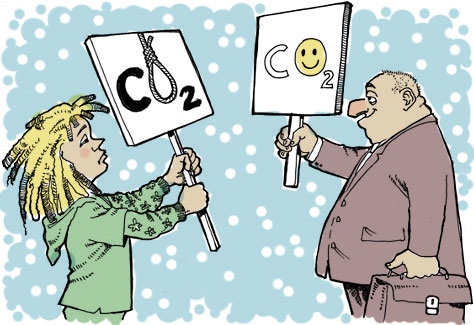Column 4 - The effects of CO2 oriented policies
There are several sustainable programs introduced in the last decades. These programs have the intention to decrease the pressure on the environment. Examples of some Dutch programs are Lean&Green and GreenFreight. Besides the fact that these programs want to decrease the negative effects on the environment, function these programs as a label for companies that aim for a sustainable image.
Sustainability is very hard to measure because of its complexity. It contains many aspects and not all of these aspects are easy to measure. However, one of these aspects that it is easy to measure and to calculate is the amount of CO2 emission. Therefore, many of these sustainable programs base their sustainable criteria on the reduction of CO2 emission. The method is widely accepted and even used by governmental sustainability programs. The environmental objectives for 2020 that are drafted by the government are mainly focused on the reduction of CO2 (Rijksoverheid, 2014).
The emission of CO2 causes the so-called "greenhouse effect". This results in raising temperatures of the earth, which has a major influence on many ecosystems in the world (Milieu Centraal, 2014). However, the "greenhouse effect" is not the only threat to the current ecosystems on earth. For example, particulate matter (PM) emissions are a main cause for air pollution. High concentrations can result in e.g. smog, which is seriously dangerous for human health. If the PM are inhaled deep into the lungs, it can cause aggravated asthma, nonfatal heart attacks and premature death (EPA United States Environmental Protection Agency, 2014).
In some cases the reduction of CO2 aligns with the reduction of other harmful substances for the environment. This is especially the case when the use of CO2 emitting resources is reduced. However, the consumer does not want to change their behaviour because of the resistance of the current ST-regime (Geels, 2004). Let us take the automotive industry as an example. The industry wants to respond to the customer's demand. On the other hand, the government stimulates diesel engine cars with a low CO2 emission to give a subsidy on them. The industry is investing massively in this car segment and produces many cars with a lower CO2 emission. Consumers buy those cars especially because of the financial benefits. The behaviour of the consumers is not altered because there is still the same amount of cars as it used to be. (It could even result in more cars because of the consumers thinking that the cars does almost emit no CO2 gasses, but that is another discussion.) However, the CO2 reduction objectives of the government are achieved because these cars emit less CO2. What not is taken into account are the other harmful substances they emit. These diesel engines emit besides CO2 also NOx. One gram of NO2 is a greenhouse gas that is 296 as harmful as one gram of CO2 (Wikimobi, 2013). If more consumers are buying diesel engine cars, the benefits of a reduced CO2 emission could be eliminated by the emissions of NOx. The overall benefits for the environment are zero or they become even worse.
If the Dutch government actually wants to improve the impact on the environment, they better adjust their policies to the reduction on the movements that cause CO2 emission, instead of the reduction of CO2 itself. This policy requires a different approach and this process of changing people's behaviour is will cause some difficulties.
Bibliography
EPA United States Environmental Protection Agency. (2014, 12 27). Particulate Manner. Retrieved 12 27, 2014 from EPA: www.epa.gov/airquality/particulatematter/health.html
Geels, F. (2004). From sectoral systems of innovation to socio-technical systems: Insights about dynamics and change from sociology and institutional theory. Research Policy , 33 (6-7), 897-920.
Milieu Centraal. (2014, 12 20). Broeikaseffect. Retrieved 12 20, 2014 from Milieucentraal: http://www.milieucentraal.nl/thema%27s/thema-1/klimaat-en-milieuproblemen/klimaatverandering/broeikaseffect/
Rijksoverheid. (2014, 12 20). Klimaatverandering. Retrieved 12 20, 2014 from Rijksoverheid: http://www.rijksoverheid.nl/onderwerpen/klimaatverandering/stand-van-zaken-klimaatdoelen-2020
Wikimobi. (2013, 01 22). Emissies. Retrieved 12 27, 2014 from Wikimobi: http://wikimobi.nl/wiki/index.php?title=Emissies#CO2.2C_NOx.2C_PM10
